The group’s research interests are focused on:
DIAMOND ELECTRODE
Boron-doped diamond (BDD) grown on silicon substrate is a new electrode material with a large set of characteristics such as a low and stable voltammetric and amperometric background current and a wide working potential window. BDD electrode has brought an important Electrochemical Technology with a significant impact in electrogeneration of hydroxyl radicals which play the major role in electroanalysis, electrosynthesis and wastewater treatment.
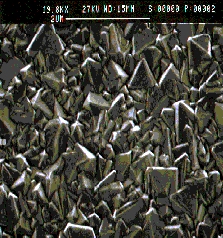 SEM of a polycrystalline BDD electrode |
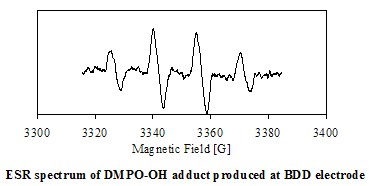 |
ELECTROCHEMICAL PROMOTION (György Fóti)
Electrochemical Promotion of Catalysis (EPOC) deals with in situ control of a solid-electrolyte-supported metal or metal oxide catalyst by current application. The resulting dramatic increase in catalytic rate often exceeding by several orders of magnitude the increase anticipated from Faraday’s Law, the phenomenon is also called Non-faradaic Electrochemical Modification of Catalytic Activity (NEMCA). The activity of our group consists of both fundamental study and reactor development for EPOC.
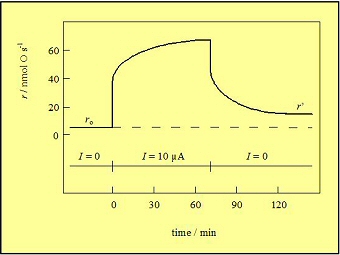 |
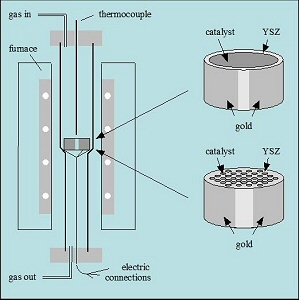 |
NANOPARTICLES (Guillaume Siné)
Preparation of Pt-based nanoparticles by the microemulsion technique:
This technique allows the formation of true nanoparticles (2-5 nm in diameter) as defined in catalysis. It consists of mixing two water-in-oil microemulsions, i.e. stable dispersions of aqueous nanodroplets in an organic phase, of identical formulation. Each of the two microemulsions contain in its aqueous phase one of the reactant, i.e. a metallic precursor (H2PtCl6) and a reducing agent (N2H4). Collisions between aqueous nanodroplets, due to Brownian motion, result in the reduction of H2PtCl6 by N2H4 into the aqueous phase. Pt particles nucleation and growth are limited by the dimensions of aqueous nanodroplets.
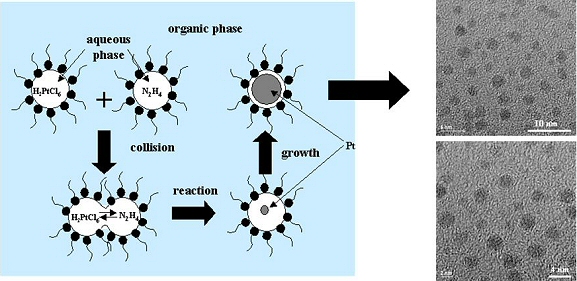
BDD electrodes have been used as substrate for the investigation of these nanoparticles. Our aim is to understand and improve catalytic performance towards reactions of technological and environmental interest, such as electrooxidation of methanol and ethanol.
SOLID OXIDE FUEL CELLS (György Fóti, Gabriele Prosperi)
A Solid Oxide Fuel Cell (SOFC) is a device converting a hydrogen rich fuel stream into electrical energy and heat (see figure). Actually a CTI project is in development in our laboratory to up scale a low cost solid oxide fuel cell stack to 1kWel level and operated on carbon-based fuel. The project intends to switch from H2 fuel feed to simple carbon-based fuel (methanol). The target is to achieve high electrical efficiency (> 35%) and long term stability.
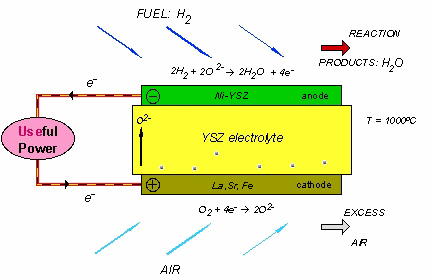
ELECTROCHEMISTRY UNDER EXTREME CURRENT DENSITIES (Rolf Wüthrich)
Electrochemical systems under extreme current densities (a few A/mm2) may result in so called electrode effects. Electrode effects, better known as “anode-effects”, occur in electrolysis at high voltage (typically 30V applied between anode and cathode). They are characterised by the sudden breakdown of electrolysis (as seen on the static I-U characteristics). The cause of this breakdown is still, more than 150 years after its discovery by Foucault and Fizeau, under discussion.
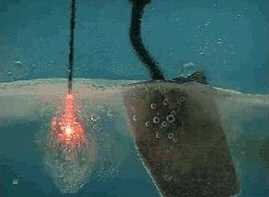
Our research is focused on the fundamental understanding of this phenomenon in various applications (micro-machining with SACE, anode effects in aluminium production by electrolysis) and similar phenomena (life time of electrodes, oxidation of CO, C2H4 by O2 over VIII metal catalytic reactions).